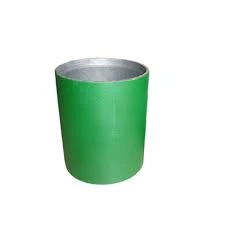- Afrikaans
- Albanian
- Amharic
- Arabic
- Armenian
- Azerbaijani
- Basque
- Belarusian
- Bengali
- Bosnian
- Bulgarian
- Catalan
- Cebuano
- Corsican
- Croatian
- Czech
- Danish
- Dutch
- English
- Esperanto
- Estonian
- Finnish
- French
- Frisian
- Galician
- Georgian
- German
- Greek
- Gujarati
- Haitian Creole
- hausa
- hawaiian
- Hebrew
- Hindi
- Miao
- Hungarian
- Icelandic
- igbo
- Indonesian
- irish
- Italian
- Japanese
- Javanese
- Kannada
- kazakh
- Khmer
- Rwandese
- Korean
- Kurdish
- Kyrgyz
- Lao
- Latin
- Latvian
- Lithuanian
- Luxembourgish
- Macedonian
- Malgashi
- Malay
- Malayalam
- Maltese
- Maori
- Marathi
- Mongolian
- Myanmar
- Nepali
- Norwegian
- Norwegian
- Occitan
- Pashto
- Persian
- Polish
- Portuguese
- Punjabi
- Romanian
- Russian
- Samoan
- Scottish Gaelic
- Serbian
- Sesotho
- Shona
- Sindhi
- Sinhala
- Slovak
- Slovenian
- Somali
- Spanish
- Sundanese
- Swahili
- Swedish
- Tagalog
- Tajik
- Tamil
- Tatar
- Telugu
- Thai
- Turkish
- Turkmen
- Ukrainian
- Urdu
- Uighur
- Uzbek
- Vietnamese
- Welsh
- Bantu
- Yiddish
- Yoruba
- Zulu
Understanding the Casing Pup Joint in Oil and Gas Operations
Understanding Casing Pup Joints A Key Component in Oil and Gas Operations
Casing pup joints are integral components of oil and gas drilling, serving critical functions in the completion, production, and overall integrity of well operations. These joints are essentially short lengths of pipe that are used to connect various parts of a casing string or to facilitate other operations within the wellbore. Their design and material composition are vital for managing the challenges posed by the harsh conditions found in subsurface environments.
Definition and Purpose
A casing pup joint is a specialized section of casings, typically ranging from 2 to 10 feet in length
. They are designed to link two sections of casing or to provide the necessary adjustments in the casing string to account for thermal expansion, contraction, or changes in wellbore geometry. These joints can also play a crucial role in effective fluid management within the well, influencing the flow dynamics of the hydrocarbons being extracted.One of the primary purposes of a pup joint is to allow for precise adjustments in casing length. During drilling operations, it may be necessary to shorten or lengthen the casing string to achieve optimal positioning for cementing or to accommodate geological formations. Casing pup joints are engineered to provide this flexibility, enhancing the overall efficiency and effectiveness of drilling operations.
Materials and Construction
Casing pup joints are generally constructed from carbon steel or stainless steel, with variations in wall thickness and diameter depending on the specific application and the anticipated pressures and temperatures of the well environment. Often, these joints are coated with protective linings to prevent corrosion, which can significantly impact their longevity and performance.
The manufacturing process of casing pup joints requires precision and adherence to stringent industry standards. They must be able to withstand various mechanical stresses, including tensile, compressive, and torsional forces, while maintaining their integrity over the lifespan of the well.
casing pup joint

Applications in Drilling Operations
In drilling operations, casing pup joints serve multiple functions. They are often used during the cementing process, where controlling the flow of cement is crucial to prevent leaks and ensure that the casing is securely bonded to the geological formations. The use of pup joints allows for a more predictable and manageable cementing operation, contributing to the overall sealing of the wellbore.
Moreover, pup joints can be employed in situations where space is limited, and traditional casing lengths may not fit. Additionally, when making adjustments to the casing string during operations, pup joints facilitate the installation of various tools and equipment at specific intervals. This adaptability is essential for optimizing production and maintaining well integrity.
Challenges and Considerations
Despite their advantages, using casing pup joints comes with its own set of challenges. The potential for improper installation or material failure can lead to significant operational disruptions. It is critical that the selection of materials and the design of pup joints are tailored to the specific conditions of the well, accounting for factors such as temperature fluctuations, pressure differentials, and the mechanical properties of the surrounding geological formations.
Proper handling and installation are equally important. The connection points must be sealed correctly to prevent leaks, which could compromise the entire well operation. Ongoing inspection and maintenance are also necessary to identify wear and tear that may affect joint integrity over time.
Conclusion
Casing pup joints are pivotal in the realm of oil and gas drilling, providing essential flexibility and support for well operations. Their role in connecting various sections of casing, facilitating cementing, and managing fluid dynamics cannot be overstated. As the industry continues to evolve, advancements in materials science and engineering practices will undoubtedly enhance the performance and reliability of these critical components. For operators and engineers alike, understanding the full potential and limitations of casing pup joints will remain essential to ensure successful drilling and production outcomes in the challenging environments of oil and gas extraction.
-
Tubing Pup Joints: Essential Components for Oil and Gas OperationsNewsJul.10,2025
-
Pup Joints: Essential Components for Reliable Drilling OperationsNewsJul.10,2025
-
Pipe Couplings: Connecting Your World EfficientlyNewsJul.10,2025
-
Mastering Oilfield Operations with Quality Tubing and CasingNewsJul.10,2025
-
High-Quality Casing Couplings for Every NeedNewsJul.10,2025
-
Boost Your Drilling Efficiency with Premium Crossover Tools & Seating NipplesNewsJul.10,2025







